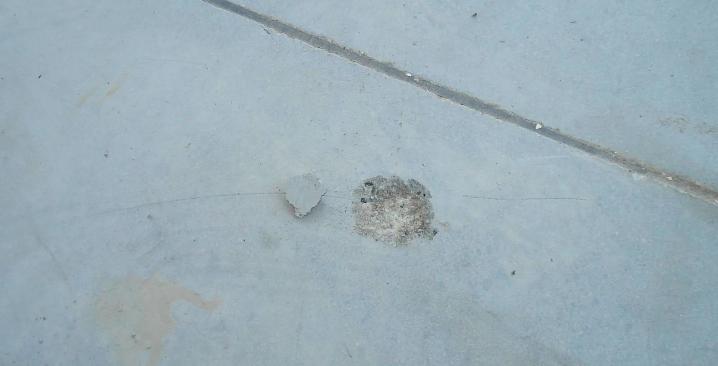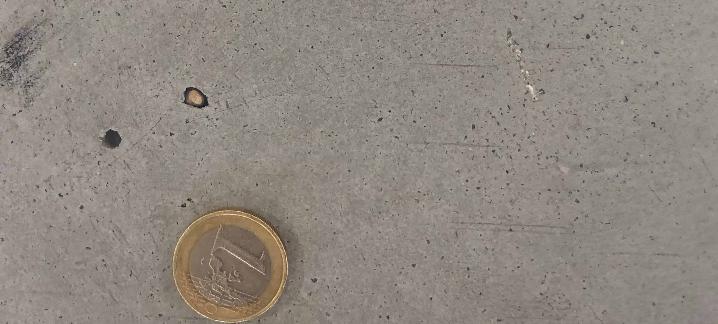We want to share with you an unusual experience about concrete floors, the alkali-carbonate reaction. We know that it could happen that aggregates on concrete are not always chemically inert as they are supposed to be. Sometimes aggregates react with alkali and water and produce expansion; the result is a pop-out of the floor. The pop-out is the expulsion of a bit of floor surface, generally of the dimension of a coin. Inclusions of wood or other pollutants could also generate a pop-out on the concrete floor, but usually what we experience is the alkali-silica reaction, for example pretty common in the past in the east coast of Italy.

A typical example of pop-out on a concrete floor.
Recently, we met three examples of a more rare pop-out: smaller in size, with the aggregate that is exposed to the surface. It's challenging to recognize it as a pop-out because there are no typical cracks around it and often the only part losing from the floor is the aggregate itself.
The result is a floor littered with thousands of pinholes.

Pinholes on a concrete floor. Some of them have still a stone inside.
When you find one of these little stones, of the dimension of 2 to 8 millimetres, you will notice that they are fragile. Giving a hammer is enough to disintegrate and reduce in powder the stone. Another symptom is the white powder generated when you scratch the pinhole with a screwdriver.
What is it about?
It's a reaction with certain dolomitic rocks, called alkali-carbonate reaction. The alkali-carbonate reaction is much less understood than the alkali-silica reaction, and there's not so much literature about it. You can find a small paragraph about it in the internet site of Portland Cement Association.
The suspect examples we found are located around Italian and Austrian Alps; however it has been observed in the past in other regions like Canada.
What can we do about it? Not so much really, the reaction will continue indefinitely in time: in two cases in Italy, where the aesthetic effect was not so significant, we treated all the area with Evercrete Vetrofluid®, removed all the stones from the pinholes (yes! a veeeery long job) and fill them up with Ercole®. After two years, the concrete platforms are still in good health. The important thing is to avoid any coating on such kind of machine-gunned floors: they will fail.
The Dolomites Concrete